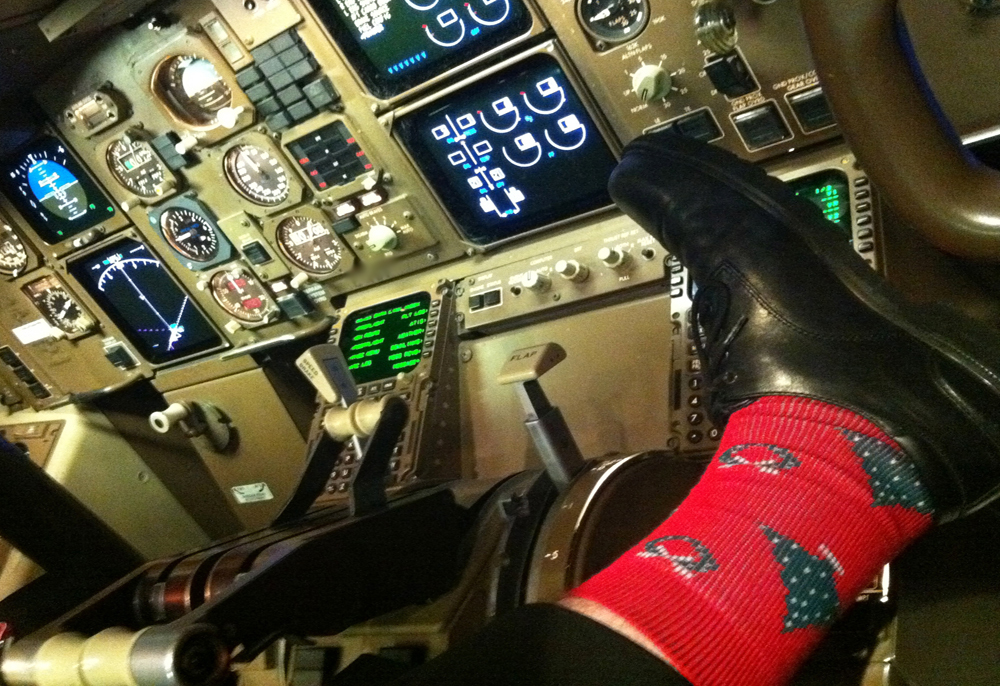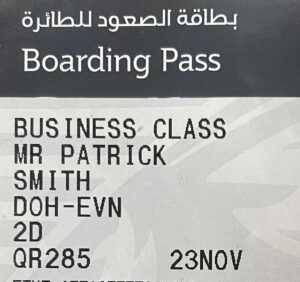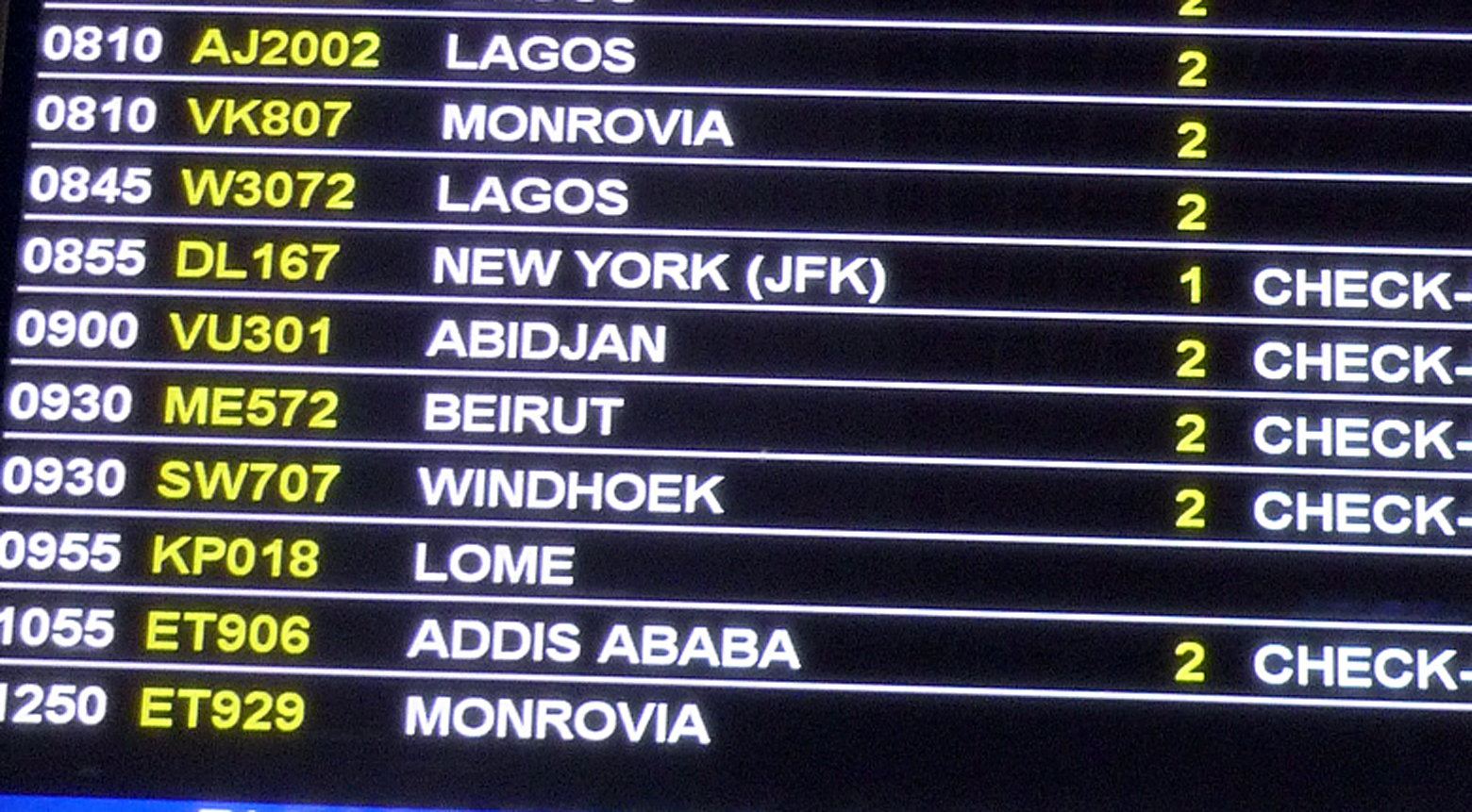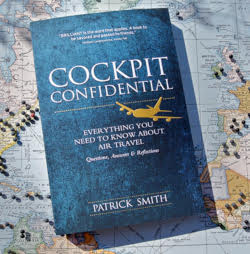Ask the Pilot Christmas, 2024

December 22, 2024
Welcome to the 2024 installment of “An Ask the Pilot Christmas.”
I traditionally start off with gift suggestions, but this year I really don’t have any, save a shameless plug for my book. I mean, it does make a kickass stocking stuffer.
You can expect chaos at the airports, of course. According to the International Air Transport Association (IATA), roughly 62 billion people are expected to fly between now and New Year’s Eve, 96 percent of them connecting through Atlanta.
In fact I don’t know how many people are projected to fly. I haven’t been listening. In any case, it’s the same basic story every year: the trade groups put out their predictions, and much is made as to whether slightly more, or slightly fewer, people will fly than the previous year. Does the total really matter? All you need to know is that airports will be crowded and flights full. Any tips I might offer are simple common sense: leave early, and remember that TSA considers fruitcakes to be hazardous materials (no joke: the density of certain baked goods causes them to appear suspicious on the x-ray scanners).
For years I made a point of working over the holidays. When I was a bottom-feeder on my airline’s seniority list, it was an opportunity to score some of those higher-quality layovers that were normally out of reach. Other pilots wanted to be home with their kids or watching football, and so I was able to spend Christmas in Cairo, Edinburgh, Budapest and Paris.
That’s how it works at an airline: every month you put in your preferences: where you’d like to fly, which days you’d like to be off, which insufferable colleagues you hope to avoid, and so on. There are separate bids at each base, for each aircraft type and for each seat – i.e. captain and first officer. The award process then begins with the most senior pilot in the category and works its way down. The lowest-rung pilots have their pick of the scraps.

Festi-fying my hotel room. Accra, Ghana, 2013.
Eventually the process reaches a point when there are no more rostered trips to give out. Those pilots left over — the bottom ten or fifteen percent — are assigned to what we call “reserve.” A reserve pilot has designated days off, and receives a flat minimum salary for the month, but his or her workdays are a blank slate. The reserve pilot is on call, and needs to be within a stipulated number of hours from the airport — anywhere from two to twelve, usually, and it can change day to day. When somebody gets sick, or is trapped in Chicago because of a snowstorm, the reserve pilot goes to work. The phone might ring at 2 a.m., and you’re on way to Sweden or Brazil — or to Omaha or Sacramento.
Looking back, holiday flying has provided me a number of those sentimental vignettes guaranteed to make a person maudlin once they’re retired and looking back…
One of my favorite memories dates back to Thanksgiving, 1993. I was captain of a Dash-8 turboprop flying from Boston to New Brunswick, Canada, and my first officer was the always cheerful and gregarious Kathy Martin. (Kathy, who also appears in my “Right Seat” essay, was one of three pilots I’ve known who’d been flight attendants at an earlier point in their careers.) There were no meal services on our Dash-8s, but Kathy brought a cooler from home, packed with food: huge turkey sandwiches, a whole blueberry pie and tubs of mashed potatoes. We assembled the plates and containers across the folded-down jumpseat. The pie we passed to the flight attendant, and she handed out slices to passengers.
Quite a contrast to Thanksgiving Day in 1999, when I was working a cargo flight to Brussels. It was custom on Thanksgiving to stock the galley with a special meal, and the three of us were hungry and looking forward to it. Trouble was, the caterers forgot to bring the food. By the time we noticed, we were only minutes from departure and they had split for the day. I thought I was going to cry when I opened the door to our little fridge and saw only a can of Diet Sprite and a matchbook-size packet of Tillamook cheese. The best we could do was get one of the guys upstairs to drive out to McDonald’s. He came back with three big bags of burgers and fries, tossing them up to us just as they were pulling the stairs away. Who eats fast food on Thanksgiving? Pilots in a pinch.
On New Year’s Eve, 2010, I was flying over the city of Bamako, Mali, in West Africa. Fireworks explode only a few hundred feet from the ground, but when enough of them are going off at once, it’s quite the spectacle when seen from a jetliner. At the stroke of midnight, the city erupted in a storm of tiny explosions. The sky was lit by literally tens of thousands of small incendiaries — bluish-white flashes everywhere, like the pulsing sea of lights you see at concerts and sporting events. From high above, this huge celebration made Bamako look like a war zone.

Notre Dame, 2017.
I’ve also spent a number of holidays traveling on vacation. Thanksgiving in Armenia, for instance. Another Thanksgiving in Timbuktu.
And with that in mind, here’s some advice…
Do not, ever, make the mistake that I once made and attempt to enjoy Christmas at a place in Ghana called Hans Cottage, a small hotel situated on a lagoon just outside the city of Cape Coast.
They love their Christmas music at the Hans Cottage, you see, and the compound is rigged end-to-end with speakers that blare it around the clock. And although you can count me among those people able to tolerate Christmas music (in moderation, and so long as it isn’t Sufjan Stevens) there is one blood-curdling exception. That exception is the song, “Little Drummer Boy,” which is, to me, the most cruelly awful piece of music ever written. (It was that way before Joan Jett or David Bowie got hold of it.)
It’s a traumatic enough song in any rendition. And at the Hans Cottage Botel they have chosen to make it the only — only! — song on their Christmastime tape loop. Over and over it plays, ceaselessly, day and night. It’s there at breakfast. It’s there again at dinner. It’s there at three in the morning, seeping through the space under your door. And every moment between. I’m not sure who the artist is, but it’s an especially treacly version with lots of high notes to set one’s skull ringing.
“Ba-ruppa-pum-pum,ruppa-pum-pum…” as I hear it today and forever, that stammering chorus is like the thump-thump of chopper blades in the wounded mind of a Vietnam vet who Can’t Forget What He Saw. There I am, pinned down at the hotel bar, jittery and covered in sweat, my nails clattering against a bottle of Star lager while the infernal Drummer Boy warbles into the buggy air.
“Barkeep!” I grab Kwame by the wrist. “For the love of god, man, can’t somebody make it stop?”
Kwame just smiles. “So lovely, yes.”
Related Story:
LETTER FROM GHANA: WELCOME TO ROOM 420.
Photos by the author.




